Luxury Staycation in Malaysia: How to Experience It on a Budget
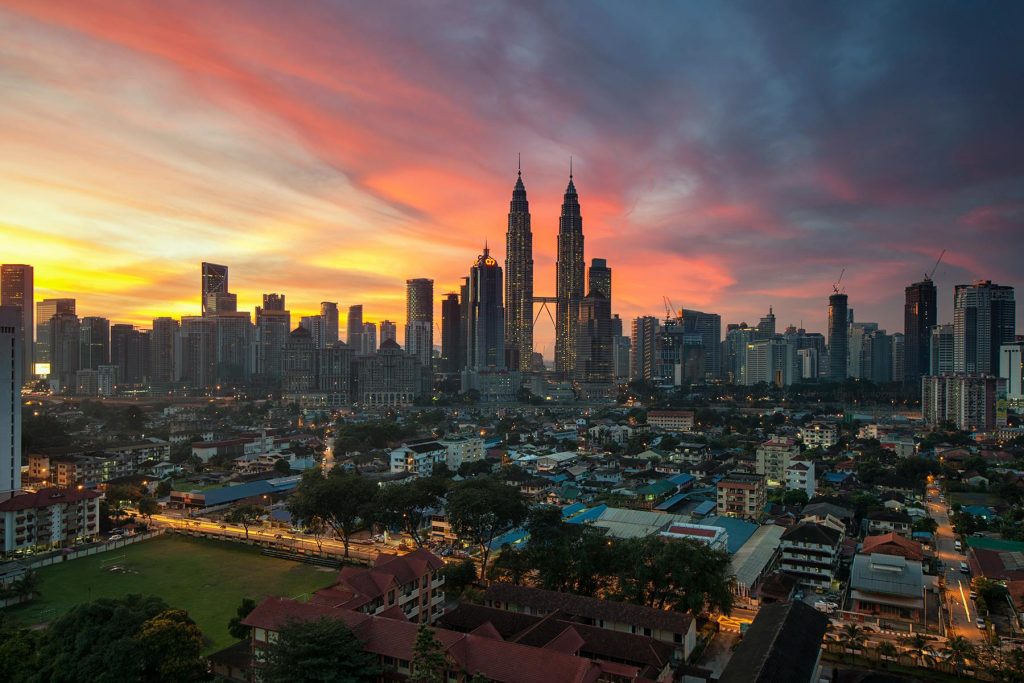
Malaysia is a dream destination for anyone seeking a little luxury because of its combination of unique, tranquil beaches, lush rainforests, and A1 hospitality. The good news? You don’t have to spend too much to enjoy it all; you can experience it all in your limited budget. This Malaysia travel itinerary is designed for a 4-day staycation that combines the comfort, unusual experiences, and local charm; it’s ideal for all traveller types, be it couples, single people, and anyone else using a Malaysia trip planner. Perfect 4-Day Travel Itinerary On a Budget Day 1 – Arrival and Unwinding in a Boutique Accommodation Morning: Get to your destination city; for the best flight connections, Kuala Lumpur, Penang, or Langkawi are the best options. Check into a serviced apartment or boutique hotel having luxury amenities like a spa or rooftop pool. Afternoon: Go slowly. Explore the heritage streets or cafés in the area. This is the day to unwind and get into “vacation mode.” Evening: Enjoy a relaxed dinner while taking in the scenery; consider Penang’s seafood by the sea or KL’s rooftop dining. Pro Tip: At a fraction of the price, boutique hotels in Malaysia often offer the same comfort as luxury chains. Before making a reservation, compare options in your Malaysia travel planner for a better choice. Day 2 – Offbeat Luxury and Local Charm Morning: Visit less well-known upscale locations. In place of crowded beaches, try Ipoh for colonial-style hotels or Desaru Coast for peaceful resorts. Afternoon: Schedule a traditional massage or spa treatment, as Malaysia is renowned for soothing fusing Balinese, Thai, and Malay methods. Evening: Enjoy heritage high tea at a restored colonial café. Pro Tip: According to your Malaysia tour guide, offbeat-path locations frequently offer lower costs and fewer tourists. Day 3 – A Little Glam in Nature Morning: Consider glamping in Janda Baik or Hulu Langat in the morning if you want to enjoy the jungle vistas without sacrificing comfort. Afternoon: Visit neighboring waterfalls or take a quick nature walk. For a different perspective of the forest, many glamping locations also provide guided night walks. Evening: Unwind with a meal by candlelight beneath the stars. Pro Tip: Add Glamping spots to your Malaysia vacation guide for an eco-luxury experience that is still affordable. Day 4 – Indulgence Without the Overnight Price Tag Morning: Book a day pass to a high-end resort. Spend the morning by the pool, enjoy a lavish brunch, or take part in water sports. Afternoon: To create a unique culinary memory to end your journey, take a private cooking class or attend a chef’s table dinner. Evening: Before leaving, take one last walk along the city promenade or the beach. Pro Tip: A great tip for your Malaysia vacation guide, day passes are an excellent way to get access to five-star amenities without having to pay for an overnight stay. Tailored Ideas for Every Travel Style in Malaysia Romantic Getaway Malaysia → Spa days, sunset dinners, and private pool villas in Langkawi. Culture Enthusiasts → H Tea plantations in the Cameron Highlands and heritage stays in Penang. Offbeat Explorers → Boutique hotels in Ipoh, glamping in Pahang, and eco-retreats in Borneo. City Lovers → KL serviced apartments featuring skyline views and rooftop pools. FAQs Is it feasible to have a genuine luxurious experience in Malaysia while staying within your means? Absolutely! Luxurious experiences can be had without going over budget if you use the correct Malaysia trip planner and a few smart tips like boutique hotels, reward points, and off-season reservations. What are the best destinations in Malaysia for a budget luxury staycation? Langkawi, Penang, and the Cameron Highlands are top picks. They offer beautiful stays, chill vibes, and affordable luxury. A good Malaysia vacation guide can help you find hidden gems in each spot. Are boutique hotels in Malaysia cheaper than luxury chains? Most of the time, yes! Boutique hotels often come with stylish interiors and personal touches at a fraction of the price. Add one to your Malaysia travel planner for a cool, curated experience. Is glamping in Malaysia considered a luxury stay? Definitely! Glamping offers all the aesthetic vibes—think comfy beds, jungle views, and even private bathrooms. For fashionable travelers, it is an essential addition to any Malaysian travel guide. What are some reasonably priced luxury experiences in Malaysia? Try heritage afternoon teas, spa days, private cooking lessons, or rooftop dinners. These minor luxuries enhance your vacation without exceeding your Malaysia travel budget. Final Thoughts Luxury in Malaysia isn’t reserved for those with endless resources. If you have the right Malaysia travel planner and a little insider knowledge, you can experience boutique hotels, spa retreats, heritage dining, and even glamping without going over budget. A range of staycation styles are available to all types of travelers, such as short cultural escapes, self-care weekends, and romantic getaways in Malaysia. At The Tarzan Way, we believe travel should be immersive, authentic, and stress-free. That’s why our Malaysia trip guide options are designed to help you experience the country’s best — from hand-picked stays to curated activities — while keeping your budget in check.
Essential Tips for Road Tripping Through Northern Thailand
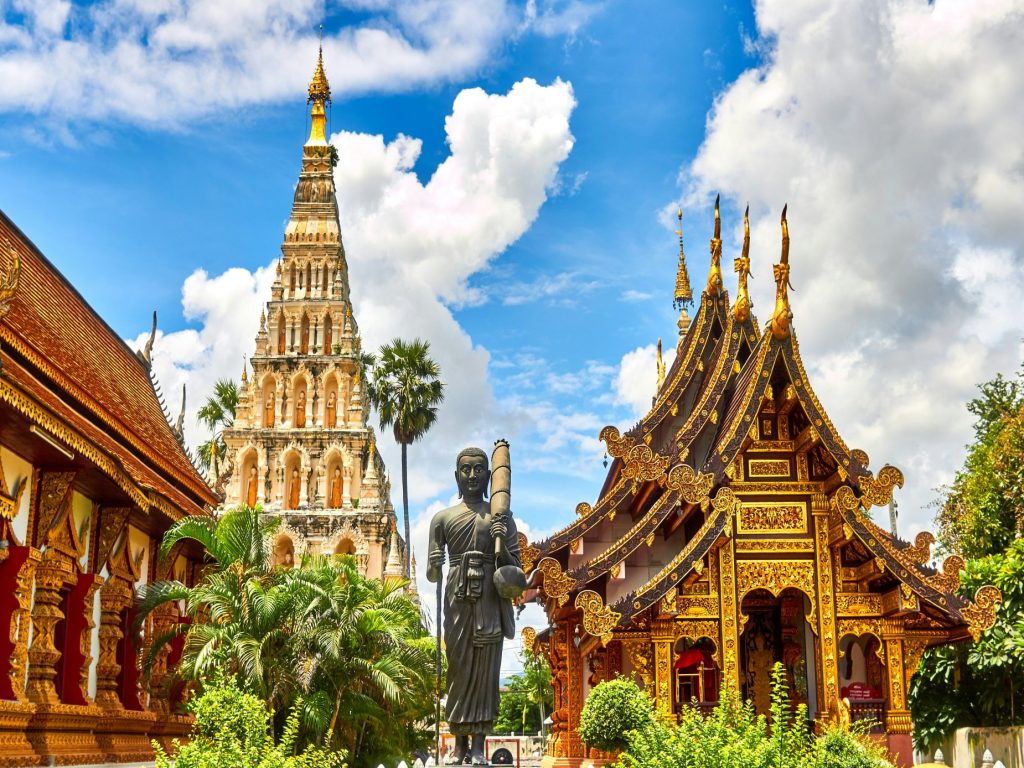
Are you planning your Thailand itinerary? In northern Thailand, every turn on the road reveals misty hills, ancient temples, and stories from hill-tribe communities that have been around for hundreds of years. Here is the best Thailand travel guide for your northern road trip, whether you’re renting a car or riding a bike. 5-Days Road Trip Plan for Northern Thailand Day 1: Cultural Starting Point is Chiang Mai. Morning: Arrive in Chiang Mai, check into your hotel, and start with the city’s best sights: The golden buildings of Wat Phra Singh The old brick stupa at Wat Chedi Luang Afternoon: Browse the old city markets for souvenirs and sample local snacks. Evening: If your trip aligns with November, witness the Yi Peng Lantern Festival — thousands of lanterns floating into the night sky. Pro Tip: Stock up on road trip essentials here — snacks, water, and a SIM card with good data coverage for navigation. Day 2: Traveling from Chiang Mai to Pai via the Mae Hong Son Loop The Mae Hong Son Loop’s most famous features are its 1,864 curves and picturesque mountain views. Morning: Get out early and enjoy the shifting scenery, which includes rice fields, forests, and roadside food stalls. Afternoon: Visit a Karen hill tribe village to learn about traditional weaving. Try some sticky rice wrapped in banana leaves from a local vendor. Evening: Travel to Pai and relax at the bamboo bridge or the nearby hot springs. Pro Tip: If you are prone to motion sickness, bring medication because the winding roads can be challenging to navigate. Day 3: Exploration of Nature and Culture in Pai Morning: Take a tour of the Lahu and Hmong villages with a guide. Dress modestly and ask permission before taking pictures to show respect for local traditions. Afternoon: Have a picnic lunch after a quick hike to a hidden waterfall. Evening: Wander through Pai’s walking street and enjoy live music. Pro Tip: Talk to locals; it helps the community and deepens your cultural experience. Going with a local tour guide from Thailand, if at all possible, enhances the authenticity of the Thai culture. Day 4: Hilltop Temples and Markets from Pai to Mae Hong Son Morning: Take a morning drive to Mae Hong Son, stopping along the way for expansive views. Visit Wat Phra That Doi Kong Mu for a bird’s-eye view of the town. Afternoon: Spend the afternoon exploring the Shan market, which is renowned for its handcrafted goods, tea, and spices. Evening: Book a room at an eco-friendly guesthouse or in a riverside lodge. Pro Tip: In Mae Hong Son, try the Northern Thai specialty Khao Soi curry, which has a rich, coconut-based broth. Day 5: Head Back to Chiang Mai’s Scenic City Morning: Leave early and stop at small coffee farms owned by local tribes. Afternoon: Enjoy a final roadside noodle bowl before heading back to Chiang Mai. Evening: Enjoy a soothing Thai massage to cap off your trip. Pro Tip: Always have fuel on hand because there aren’t many gas stations in isolated areas. Best Northern Thailand Itinerary Ideas for Different Travelers Culture Enthusiasts: Shan market, hill tribe weaving workshops, and Chiang Mai temples. Adventure Seekers: For those seeking adventure, there is the Mae Hong Son Loop, Pai Canyon, and waterfall hikes. Romantic Couples: Bamboo resorts, Hot springs, and Sunset dinners. Offbeat Explorers: Hidden coffee farms, Ban Rak Thai village. FAQs 1. Is it safe to drive through Northern Thailand? Of course. In general, northern Thailand is safe, particularly if you stick to well-traveled routes like Mae Hong Son or Chiang Mai to Pai. Just be careful on those winding mountain roads, drive sensibly, and refrain from riding at night in isolated places. 2. Do I need an international driver’s license to rent a vehicle in Thailand? Yes, you do. While some rental places may not ask, it’s technically required, and if the police stop you (which they often do), you could get fined. So carry your IDP (International Driving Permit) with your local license. 3. Is a car or bike a better option for a road trip in Northern Thailand? Really depends on how you feel. Motorcycles allow you to travel freely in the open air and are ideal for both solo and group travel. However, a car is your best option if you’re traveling in a group or if you want more comfort and air conditioning. In any case, before you go, make sure it’s in good condition. 4. When is the best time to road trip through Northern Thailand? Between November and February. That’s when the weather is coolest, skies are clear, and the mountain views are next-level. Avoid the rainy season (July–October) unless you love sliding around muddy roads. 5. Can I use Google Maps, or should I get a physical map too? Google Maps works great when there’s a signal. In remote hills, it can be patchy. So download offline maps before you leave, or keep a physical map as backup if you’re feeling old-school (or just cautious). 6. What are some must-see stops on a Northern Thailand road trip? You can’t miss Pai, Mae Hong Son, Chiang Rai, and the Golden Triangle. For something extra offbeat, explore Ban Rak Thai, a Yunnanese village near the Myanmar border. And don’t skip the hot springs and hilltop temples! Final Thoughts Northern Thailand is a whole mood rather than just a place to visit. This area provides a soulful escape that is unmatched by mainstream Thailand, with its misty mountains, winding roads, and beautiful villages waiting around every corner. With this Thailand travel guide in hand, you’re ready for an amazing off-the-beaten-path experience. Why wait, then? Let your fantasies about road trips drive you. Explore your options with The Tarzan Way, a Thailand vacation guide where every experience is designed to help you travel deeper, slower, and smarter, and use our Thailand trip planner to plot your itinerary.
The Hidden Gems of Ladakh: Must-See Places Most Tourists Miss
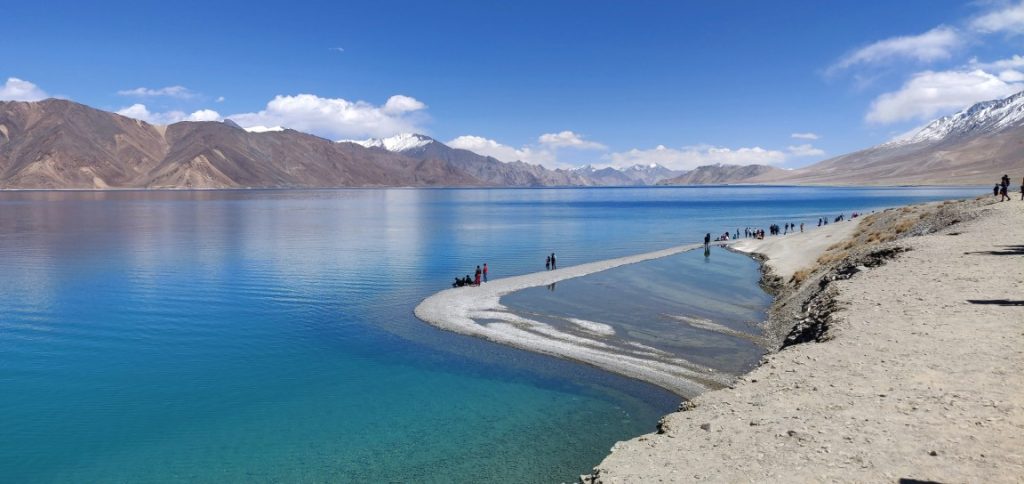
Ladakh is a stunner. But while most travelers flock to Pangong Lake, Nubra Valley, and Magnetic Hill, there’s a whole other side to this high-altitude wonderland that rarely makes it to Instagram feeds. If you’re planning your Ladakh trip and want to go beyond the usual tourist checklist, you’re in for a wild ride. This guide uncovers the offbeat, soul-touching, and hidden gems of Ladakh that even seasoned backpackers sometimes miss. Whether you’re on a Leh Ladakh road trip or seeking the best Ladakh trekking routes, here are the hidden gems that deserve a top spot on your Ladakh itinerary. 1. Turtuk—The Unexpected Surprise Near the Border Turtuk legitimately feels like you’ve walked into a different country. This quiet little village tucked away near the Indo-Pak border is all about Balti vibes, cute stone houses, and apricot orchards that smell like heaven. It’s a culturally rich pocket that most tourists totally miss on their Ladakh road trip. Pro Tip: If you’re in Ladakh around July or August, don’t sleep on the apricot harvest here. They’re chef’s kiss good! Add Turtuk to your Ladakh trip itinerary as a scenic detour from Nubra Valley; it’s worth every dusty kilometer. 2. Sumur—Soulful and Still in Nubra Valley Sumur is your go-to if you want to slow down and soak in the peaceful side of Nubra Valley. It’s got these beautiful golden fields, quiet monasteries (hello Samstanling!), and wholesome homestays where the chai flows endlessly. Pro Tip: Book a homestay and chat with the locals over butter tea. It’ll give your Ladakh trip major heart and soul. Perfect spot to recharge if your Leh Ladakh road trip has been a whirlwind. 3. Uleytokpo—Where the Stars Go Wild Uleytokpo is low-key the most underrated stargazing spot in Ladakh. It’s quiet and scenic, and you’ll probably see more stars than people here. Plus, it’s a sweet launchpad if you’re eyeing some easy trekking in Ladakh without going full hardcore. Pro Tip: Plan your visit around a new moon night. Trust me, the Milky Way views are insane. Don’t forget your camera, and drop this into your Ladakh travel itinerary if you’re big on cosmic vibes and night-sky photography. 4. Tso Moriri—Pangong’s Quieter Sister Pangong gets all the hype (and tourists), but Tso Moriri is where you go to actually breathe. Tucked high up at over 4,500 meters, this serene lake is wrapped in silence, snow-capped mountains, and zero crowds. No honking, no distractions, just pure vibes. If you’re crafting your Ladakh trip planner, trust us: Tso Moriri is the unplugged detox you didn’t know you needed. Pro Tip: Altitude here is no joke. Stay a night in Leh before heading up. Oh, and pack thermals even in summer. Add it to your Ladakh travel package for that offbeat glow-up. 5. Dha-Hanu – The Land of the Aryans Sounds wild, right? This hidden valley is home to the Brokpa tribe folks, who are believed to be actual descendants of Alexander the Great. Their features, traditions, and language are totally unique. Visiting Dah-Hanu is like stepping into a parallel timeline, one that most travelers skip in their usual Leh Ladakh tour itinerary. Pro Tip: Be respectful; this is a sacred cultural zone. Bring some dried fruits as gifts when staying in the village; it’s a kind gesture and opens up conversation with the locals. A total must for your Ladakh sightseeing plans. 6. Chuchot Yokma – Live the Ladakhi Way Who says you need to go remote to go local? Just a short drive from Leh, Chuchot Yokma is where you can hang with locals, help out on farms, and eat home-cooked thukpa with aunties who’ll treat you like family. It’s the kind of Ladakh sightseeing that doesn’t make it to Instagram reels but stays in your memory forever. Pro Tip: Visit during sowing or harvest season and get your hands dirty; you’ll earn your lunch and stories for life. Drop it into your Ladakh travel guide if authenticity tops your list. FAQs: Hidden Gems of Ladakh Q1. Is it safe to travel to these offbeat places in Ladakh? Yes, most of these locations are safe with basic infrastructure. However, always check with locals and stay updated on weather conditions. Q2. Do I need special permits for places like Turtuk or Dha-Hanu? Yes, Inner Line Permits are required for border areas like Turtuk and Dha-Hanu. They’re easy to obtain in Leh through your hotel or travel agency. Q3. What’s the best time to explore hidden spots in Ladakh? May to September is ideal. Roads are open, and the weather is traveler-friendly. Q4. Can these places be added to my Leh Ladakh tour packages? Absolutely! Custom Leh Ladakh packages often allow flexibility. Just discuss your Ladakh trip plan with your tour operator. Q5. Are these spots included in regular Ladakh travel guides? Not always. That’s why this blog is your cheat code to discovering the best places in ladakh beyond the mainstream. Final Thoughts: Time to Go Beyond the Map The magic of Ladakh isn’t just in the big names; it’s in the tiny villages, the quiet valleys, and the stories no one’s telling yet. Whether you’re crafting your Ladakh travel itinerary, looking for a Ladakh trip package, or booking Leh Ladakh tour packages, don’t sleep on these gems. And if you’re feeling a bit overwhelmed with planning your Leh Ladakh trip, The Tarzan Way’s curated Ladakh tour itineraries can help you unlock Ladakh like a true explorer. Let’s make your trip unforgettable, one hidden trail at a time.
Is Malaysia a Good Digital Nomad Destination? Top Cities for Workation

Sun, sambal, and speedy Wi-Fi—that’s the vibe in Malaysia right now. If you’re daydreaming about working from a beachside café or a cozy heritage home with good coffee and even better connectivity, this Southeast Asian gem might just be your next home base. From buzzy city life to super chill islands, Malaysia has become a solid pick for digital nomads who want more than just a pretty view. It’s got that sweet combo of affordability, comfort, and culture—a vibe most Malaysia travel guides can’t stop raving about. So if you’ve been toying with the idea of a workation, it might be time to swap your 9-to-5 view for a palm tree. Why Malaysia Is Actually a Dream for Digital Nomads Picture this: you’re answering emails with coconut water in one hand, toes in the sand, and a noodle stall just steps away. That’s the energy you get in Malaysia. It’s not just about the scenery; it’s about living well without burning a hole in your wallet. In most Malaysia vacation guides, the cost of living is one of the first things that gets a shout-out. Rent is affordable, meals are cheap (and super tasty), and Wi-Fi is solid in all the major spots. Plus, you’ll find a ton of coworking spaces, especially in cities like Kuala Lumpur and Penang, where it’s easy to meet other nomads or just get stuff done in peace. And don’t worry about language barriers. English is widely spoken, which makes settling in much smoother. Any good Malaysia tour guide will tell you the same: the people are friendly, the culture is rich, and it’s ridiculously easy to feel at home here. Top Cities in Malaysia for Digital Nomads 1. Kuala Lumpur—The Modern Capital Kuala Lumpur is where most digital nomads begin their journey. With skyscrapers, cafes with free Wi-Fi, and plenty of shared workspaces, this city makes remote working ridiculously convenient. What sets it apart? The blend of business hubs and leisure. After clocking out, you can explore rooftop bars or stroll through night markets. Any Malaysia trip planner would recommend Kuala Lumpur for those who want that perfect mix of work and urban buzz. 2. George Town, Penang – Heritage Meets Hipster This UNESCO-listed city is more than just charming colonial streets. George Town has become a Malaysia travel planner favorite for creatives and techies alike. You’ll find coworking spaces tucked inside heritage buildings and a growing digital nomad scene. Plus, the street food here is legendary, which is probably why most Malaysia holiday guides suggest staying longer than planned. 3. Langkawi – Chill Island Vibes Need a slower pace without compromising on connectivity? Langkawi is your island haven. Many Malaysia vacation guide reviews rave about how easy it is to find peaceful villas with strong Wi-Fi and a view of the sea. Perfect for a short workation or a productivity reset, this island is where nature and nomad life meet effortlessly. 4. Johor Bahru—City Next Door to Singapore Just across the causeway from Singapore, Johor Bahru is an underrated gem. It’s often part of a Malaysia travel itinerary for those looking to be close to major Southeast Asian cities while still enjoying affordable living. Coworking cafes are popping up, and there’s a growing scene of entrepreneurs, freelancers, and content creators calling it home. Quick & Real Tips for Working Remotely in Malaysia First things first, get yourself a local SIM. Maxis and Digi are solid, fast, and easy to top up. If you’re not sure which one to pick, use a good Malaysia trip guide to compare options before you land. Coworking spaces? Oh, they’re everywhere. If you’re in Kuala Lumpur or Penang, Common Ground and WORQ are the go-to spots. Reliable Wi-Fi, cool vibes, and plenty of other digital nomads to connect with. Looking to stay a while? A solid Malaysia travel guide can help you figure out long-stay Airbnb deals and info on digital nomad visas (yes, that’s a thing here too!). Pro move: check the weather. Malaysia’s rainy season is no joke; it’s kind of romantic, sure, but also super wet. Pack that umbrella and maybe skip booking a whole week of beach shoots. FAQs About Digital Nomad Life in Malaysia Q: Is Malaysia visa-friendly for digital nomads?Yes! While Malaysia doesn’t yet have a specific digital nomad visa, you can stay up to 90 days visa-free (for many nationalities). Many nomads hop to nearby countries like Thailand or Singapore to reset their visa. Q: How much does it cost to live as a digital nomad in Malaysia?On average, a monthly budget of $800–$1,200 covers housing, food, transportation, and even coworking space. Malaysia travel guide sites often list Kuala Lumpur as one of the most affordable digital nomad cities in Asia. Q: Is Malaysia safe for solo remote workers?Definitely. It’s considered one of the safer countries in Southeast Asia. Urban areas are well-lit and tourist-friendly, and locals are incredibly welcoming. Any Malaysia tour guide would agree it’s ideal for solo travelers. Q: What kind of internet speed can I expect?You’ll get decent speeds in most urban areas. 100 Mbps or higher is common in cities. Even Malaysia holiday guides recommend mobile data plans for backup during travel. Final Thoughts: Should You Choose Malaysia for Your Workation? Absolutely. If you’re looking for the sweet spot between productivity and paradise, Malaysia trip planners everywhere agree: this country delivers. With modern cities, laid-back islands, and a welcoming vibe, it’s no wonder more remote workers are calling it home, even temporarily. Whether you’re plotting a few weeks or a few months, use The Tarzan Way to craft your perfect Malaysia travel itinerary. We help you uncover not just the best workation spots, but local experiences that add a bit of magic to your remote life.
Offbeat Thailand: Unique Experiences You Won’t Find in Tour Books
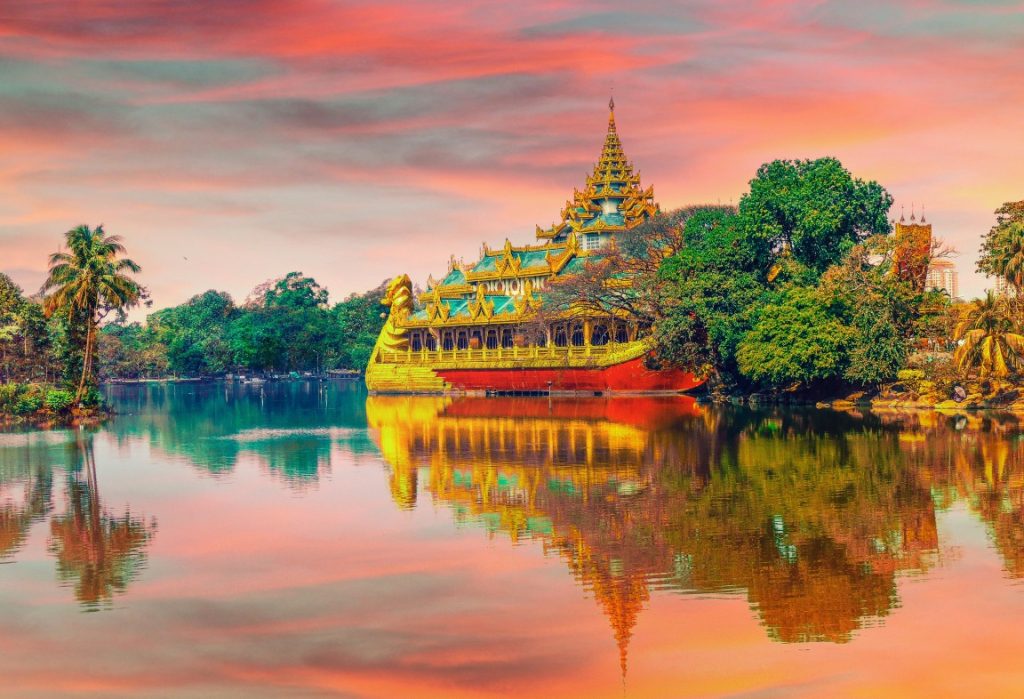
When you think of Thailand, what comes to mind? Bangkok’s nightlife, Phuket’s beaches, and Chiang Mai’s temples, right? But what if we told you there’s a whole other side of Thailand, one that’s raw, authentic, and wonderfully off the beaten path? This isn’t your typical Thailand travel guide. We’re diving into the heart of offbeat Thailand, where the real magic happens—the kind you won’t find in glossy tour books. Ready for something different? Let’s go. 1. Get Blessed at the White Temple of Wat Rong Khun (But Not Just a Photo Op) Sure, the White Temple in Chiang Rai is popular, but most people stop for a quick photo and leave. Want to do it differently? Attend a morning blessing ceremony. Watching locals in prayer while monks chant is a soulful experience you’ll never forget. Pro Tip: Arrive before 8 AM to skip the crowds and feel the spiritual vibe in peace. 2. Farm, Fish & Feast with a Local Thai Family in Isan Skip the restaurants. In Isan, northeast Thailand’s least touristy region, locals will welcome you into their homes for a hands-on Thai village experience. Think: catching fish with bare hands, cooking sticky rice over a wood fire, and dancing around a bamboo pole. 3. Chill in the Artist’s Paradise of Pai Up in the hills of northern Thailand, Pai feels like a dreamy watercolor painting. Swap resort life for bamboo huts, soak in hot springs, jam at local cafes, or paint with the free-spirited art crowd. If you’re into soulful vibes and slow living, this is your place. Pro Tip: Rent a scooter and cruise along Pai Canyon at sunset; unreal views guaranteed. 4. Bathe with Elephants (Ethically!) in Chiang Rai Want to see elephants without the guilt? Visit an ethical elephant sanctuary in Chiang Rai or Kanchanaburi where you can feed, bathe, and walk alongside rescued elephants—no riding involved. It’s heartwarming and totally unforgettable. 5. Island Hopping in Koh Yao Noi—Minus the Party Scene Dreamy sunsets, floating fisherman villages, and quiet beaches—Koh Yao Noi is the anti-Phuket. Stay at a stilt house over the water or take a boat to explore hidden limestone caves. It’s the island life you didn’t know you needed. Pro Tip: Take a sunrise long-tail boat ride for some of the best untouched seascapes in Thailand. 6. Explore the Ghost City of Lopburi (Monkey Business Guaranteed) Yes, monkeys literally run this town. In Lopburi, ancient ruins blend into a town where monkeys rule the streets and temples. It’s wild, chaotic, and fascinating in the weirdest way. 7. Hike the Sea of Mist in Phetchabun Ever seen clouds rolling beneath your feet? Phetchabun offers a unique mountain escape with misty morning hikes, remote coffee farms, and panoramic viewpoints you’ll likely have to yourself. Pro Tip: Visit Phu Thap Boek between October and January for the ultimate sea of mist. Why You Should Travel Offbeat in Thailand Let’s be real: Thailand isn’t exactly a hidden gem. Millions of travelers flock to the beaches of Phuket, the neon buzz of Bangkok, and the mountain temples of Chiang Mai every year. And while those places are popular for good reason, they only scratch the surface of what this beautiful country has to offer. That’s where a solid Thailand trip planner comes in handy. Whether you’re following a custom Thailand vacation planner or piecing together your own Thailand holiday guide, it helps to lean on a reliable Thailand tour guide who knows the offbeat gems. If you’re not sure where to start, grab a Thailand travel planner or check out a Thai travel guide that digs deeper than tourist traps. Traveling offbeat in Thailand isn’t just about skipping crowds; it’s about connection.>It’s about the fisherman who invites you into his home for grilled fish caught that morning. It’s the grandmother in Isan who teaches you how to make sticky rice the traditional way with laughter, patience, and zero English needed. It’s the feeling of riding through rice fields on a dusty motorbike road, with no itinerary and no Wi-Fi, just you and the open road. Pro Tip: Travel with intention. Ask questions. Say “yes” to invitations. Choose homestays over hotels, local markets over malls, and conversations over checklists. That’s where the real magic happens. So if you’re craving more than perfect photos and tourist hot spots, offbeat Thailand is calling. It’s slower. It’s simpler. And honestly? It’s where the heart of this country truly lives. FAQs: Offbeat Thailand Travel Q1: What are the best offbeat places to visit in Thailand?A1: Some top offbeat destinations include Isan, Pai, Koh Yao Noi, Lopburi, Phetchabun, and the lesser-known parts of Chiang Rai and Nan. Q2: Is it safe to travel to rural or offbeat parts of Thailand?A2: Yes! Thailand is one of the safest countries for travelers. Just use basic precautions, especially when navigating rural transport or staying in remote areas. Q3: How do I experience local culture in Thailand without tourist traps?A3: Choose community-based tourism, stay at homestays, join village cooking classes, and support ethical experiences like elephant sanctuaries. Q4: Can I travel offbeat Thailand on a budget?A4: Absolutely. Offbeat destinations are often cheaper than tourist hubs. Local transport, food, and lodging in rural Thailand can be incredibly affordable. Q5: What’s the best time to explore offbeat Thailand?A5: November to February is ideal, offering pleasant weather and lush landscapes perfect for hiking, festivals, and exploring lesser-known spots. Final Thoughts: If you’re looking to experience Thailand beyond beaches and buckets, dive into the country’s heart through its hidden gems. Let The Tarzan Way help you plan a Thailand trip that’s full of authenticity, warmth, and offbeat magic. Ready to ditch the crowd and explore real Thailand? Let The Tarzan Way craft a journey that’s as unique as you are.
Phuket vs Krabi: Which Is Better for Couples?

Planning a romantic escape to Thailand but stuck choosing between Phuket and Krabi? You’re not alone. Both are dreamy, tropical, and loaded with jaw-dropping views, but each offers a totally different kind of vibe. Whether you’re all about luxury resorts and nightlife or quiet beaches and adventurous bonding moments, this Thailand trip guide will help you decide where your love story should unfold. So grab your partner (and maybe a Thai iced tea), because we’re diving deep into the ultimate romantic showdown: Phuket vs. Krabi. Phuket: Luxe Vibes, Sunset Cocktails, and a Bit of Party If your dream trip includes sipping Mai Tais in an infinity pool, dancing under the stars, and pampering yourself with spa days, Phuket is your place. Phuket, Thailand’s biggest island, has all the trappings of a luxe honeymoon: gorgeous resorts, beach clubs, rooftop restaurants, and stunning views for those golden-hour Instagram moments. It’s no surprise that it’s a must-mention in every curated Thailand vacation guide. Romantic Things to Do in Phuket: Take a sunset cruise around Phang Nga Bay. Get a couples’ massage in a beachfront spa. Dine at a cliffside restaurant in Kata Noi. Spend a day island-hopping to Coral or Racha Islands. Pro Tip: For a quieter stay, skip Patong and check into a resort in Kamala or Nai Harn. Still building your dream trip? Use a reliable Thailand travel planner to help you customize the romantic Phuket experience without stress. Krabi: Nature, Cliffs & That Underrated Slow-Burn Romance Okay, so if you and your partner are all about quiet beaches, dramatic views, and zero crowds, Krabi is seriously going to steal your hearts. Picture this: limestone cliffs towering over turquoise waters, hidden coves you can kayak through, and sunsets that look like they were painted just for the two of you. It’s giving soft life, in the best possible way. While it might not be as flashy as Phuket, every good Thailand tour guide knows Krabi is where the magic happens if you’re chasing those low-key, nature-packed moments together. Cute & Romantic Things to Do in Krabi: Paddle a kayak together through the peaceful mangroves in Ao Thalane—a 10/10 bonding moment. Hike (yes, it’s a climb) to the Railay Beach viewpoint and watch the sun melt into the sea. Book a private longtail boat and float your way through the Four Islands island-hopping couple style. Conquer the Tiger Cave Temple steps for the ultimate view (and that “we did it” selfie). Pro Tip: Want a spot that feels remote but still has cute cafés and good food? Stay around Railay Beach or Ao Nang, the sweet spot between secluded and accessible. Whether you’re going full-in with a personalized Thailand travel planner or just winging it with your boo, Krabi is that kind of peaceful, intimate place that lets you slow down, unplug, and just be. It’s no surprise that it’s becoming a favorite in every legit Thailand vacation guide. Phuket vs. Krabi: The Couple’s Comparison Table Criteria Phuket Krabi Vibe Luxurious, lively Laid-back, nature-focused Nightlife Buzzing clubs & beach bars Chill bars, local joints Crowds Busier, more touristy Quieter, more serene Beaches Well-developed & scenic Raw, natural beauty Ideal For Glam couples, honeymooners Adventurous, low-key lovers FAQs: Phuket vs Krabi for Couples Q1. Which is better for honeymooners, Phuket or Krabi?If you want luxury and ease, Phuket wins. But if you’re after intimate, offbeat charm, Krabi’s your spot. Q2. Is Krabi cheaper than Phuket for couples?Yes! Krabi is generally more budget-friendly, especially for accommodation and food. Q3. Which destination has better couple-friendly resorts?Phuket has more luxury options, but Krabi has romantic boutique stays that feel private and cozy. Q4. Can I visit both Krabi and Phuket in one trip?Absolutely. Many Thailand travel planners recommend combining both; it’s a short ferry ride between them. Q5. Which place is safer and more comfortable for couples?Both are safe, but Krabi is quieter. Phuket has more amenities and medical care nearby. Final Thoughts Choosing between Phuket and Krabi really depends on your couple style. Want to wine, dine, and dance the night away? Phuket’s got you. Craving peace, scenic adventures, and deep conversations by the sea? Krabi is calling. Still stuck? Let The Tarzan Way, your go-to Thailand tour guide, help you plan the perfect romantic escape. Whether you’re looking for a Thailand holiday guide or help crafting the ideal itinerary for Bangkok, Phuket, and Krabi, we’ve got your back with personalized recommendations, hidden gems, and all the couple vibes. Explore with heart. Travel with The Tarzan Way.
Langkawi vs Penang: Which Is Better for First-Time Travelers?

Planning your first trip to Malaysia and stuck choosing between Langkawi and Penang? Don’t worry, you’re not alone. These two stunning Malaysian gems each offer something completely different, and as your unofficial Malaysia trip planner, we’re here to break it down for you. Whether you’re a beach bum, foodie, culture buff, or adventure lover, this Malaysia vacation guide will help you decide which destination deserves your passport stamp first. Langkawi: The Island Life Dream Vibes: Relaxed, tropical, and nature-focused. Langkawi is all about laid-back island energy. Think white-sand beaches, lush rainforests, and luxury resorts nestled along peaceful coastlines. It’s the perfect escape if you’re craving some serious R&R with a splash of adventure. Many travel agencies in Malaysia often include Langkawi in honeymoon and island getaway packages for good reason. Top Things to Do in Langkawi: Ride the Langkawi SkyCab to panoramic island views. Island hop to secluded beaches and snorkeling spots. Chill at Tanjung Rhu Beach or visit the mangroves of Kilim Karst Geoforest Park. Treat yourself at a luxe beachfront resort. Perfect for honeymooners, nature lovers, and solo travelers looking to unplug. Pro Tip: Rent a scooter and explore the island at your own pace; it’s safe, easy, and insanely scenic. Add this to your Malaysia travel itinerary and thank us later. Penang: Culture, Food & Colorful Streets Vibes: Energetic, historic, and foodie heaven. Penang is where Malaysia’s multicultural roots truly shine. In George Town, you’ll find charming colonial buildings, street art on every corner, and hawker stalls selling some of the best food in Asia. If you’re a foodie following a Malaysia tour guide, this is your paradise. Top Things to Do in Penang: Feast your way through local dishes like char kway teow, laksa, and cendol. Snap pics with George Town’s famous street art trail. Visit Kek Lok Si Temple and Penang Hill. Wander through Little India and Chinatown for culture overload. Perfect for culture seekers, foodies, digital nomads, and history buffs. Pro Tip: Take a guided street food tour to unlock hidden foodie spots most tourists miss; your stomach will thank you. It’s a must-have in any Malaysia travel guide. Criteria Langkawi Penang Nature Beaches, rainforests Urban parks, hills Food Seafood-focused Street food paradise Culture Limited temples Rich heritage, temples, murals Nightlife Beach bars Trendy cafes, markets Budget Mid to high Budget to mid-range Ideal For Honeymooners, chill seekers Backpackers, culture lovers Verdict: So… Which One Should You Choose? Pick Langkawi if you want a laid-back island escape surrounded by nature and scenic beauty. a top pick for any romantic getaway, Malaysia edition. Go for Penang if you’re into culture, history, and eating your way through Malaysia. Still can’t choose? Combine both! It’s easy to travel between the two by a short flight or ferry, so you get the best of both worlds. FAQs About Langkawi vs Penang for First-Time Travelers Q1. Which is better for beaches: Langkawi or Penang? A: Langkawi wins here hands down with stunning beaches like Pantai Cenang and Tanjung Rhu. Q2. Is Penang or Langkawi cheaper for budget travelers? A: Penang tends to be more affordable, especially for food and guesthouses. Q3. Which is better for food: Penang or Langkawi? A: Penang is the Malaysia tour guide–approved food capital. You’ll find endless local delights! Q4. Can I visit both Langkawi and Penang in one trip? A: Absolutely! A well-planned Malaysia travel itinerary can easily fit both into 7–10 days. Q5. Which is safer for solo travelers? A: Both are safe for solo travelers. Langkawi is more relaxed, while Penang has more going on. Final Thoughts Whether you choose Penang’s buzzing food streets or Langkawi’s dreamy beaches, your Malaysian adventure is bound to be unforgettable. Need help building the perfect plan? Let The Tarzan Way be your go-to Malaysia travel planner. From hidden gems to curated stays, we help you travel smarter, deeper, and more meaningfully. Explore with heart. Travel with The Tarzan Way.
Is Kerala Safe for Solo Female Travelers? What You Need to Know
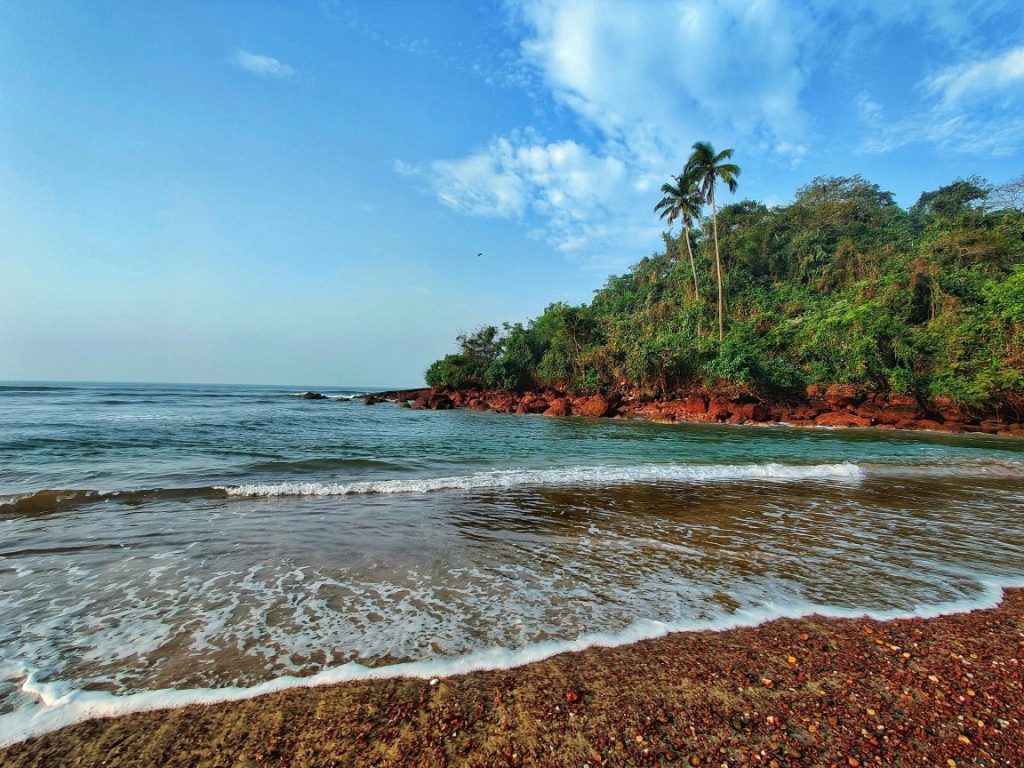
Dreaming of gliding through Kerala’s backwaters on a houseboat or catching a golden sunset at a cliffside café in Varkala all on your own? If you’re a solo female traveler wondering whether Kerala is safe, the short answer is yes, absolutely, but with some smart travel moves. This Kerala travel guide has got your back. Often called God’s Own Country, Kerala is not just postcard-perfect; it’s also one of the safest places in India for women to explore solo. From high literacy rates to a progressive mindset and respectful locals, Kerala is a breath of fresh air for many women travelers venturing alone. Still, safety is never one-size-fits-all. So, before you pack your bags and start mapping your Kerala solo travel itinerary, here’s what you really need to know to stay safe, empowered, and blissfully carefree. So, how safe is Kerala for solo female travelers, really? Let’s keep it real: Kerala isn’t a magical fairytale land, but it is one of the few states in India where solo women travelers often feel more at ease. Here’s why: Tourist-friendly culture: Locals are warm, helpful, and generally mind their business. You won’t feel stared at or judged constantly (a big relief, right?). Educated & progressive society: With the highest literacy rate in India, Kerala tends to have a more gender-equal vibe. Plenty of women-only options: Think women-run homestays, women’s dorms, and even women-only cabs in some areas. Relaxed vibe: Unlike many Indian cities, Kerala moves at a calm, coastal pace. Less chaos = less stress. Many women say they’ve felt safer wandering through a spice market in Thekkady or hiking solo in Wayanad than walking home in their own city. And that says a lot. Safety Tips for Solo Female Travelers in Kerala Okay, so Kerala is honestly one of the chillest and safest states in India, but hey, solo travel anywhere comes with its own vibe check. Here’s how to stay confident, comfy, and in control while exploring God’s Own Country on your own: 1. Dress for You, But Keep it Local You don’t have to wear a saree or blend in completely, but keeping it modest helps avoid unnecessary stares, especially in smaller towns. Think breezy kurtis, comfy cotton pants, long skirts, or even maxi dresses. You’ll stay cool and culturally respectful. Win-win. 2. Stay Connected Like a Pro Before you set off, share your rough plan with a friend or family. Download tracking apps like Life360 or just use Google Maps’ live location. Also, grab a local SIM card (Jio or Airtel FTW) so you’re never out of the loop, even in the hills or backwaters. 3. Sleep Smart: Pick Safe, Well-Reviewed Stays Your stay = your vibe. Go for homestays, women-run hostels, or guesthouses with glowing reviews from other solo travelers. Bonus if the host is friendly or offers local tours, extra safety, and wholesome hospitality. 4. Late Night? Maybe Skip the Solo Strolls Kerala is peaceful, but night walks in unfamiliar or quiet areas? Not the best idea. If you’re heading out after dark, stick to main roads or call an Uber/Ola or ask your hotel for a reliable cab. 5. Public transport is fine. Just Be Mindful Buses and trains are super budget-friendly, but they can get hectic. Try booking AC compartments or reserved seats if you can. There are women-only sections too, which feel way more chill for solo riders. Best Places in Kerala for Solo Female Travelers 1. Fort Kochi Think: pastel streets, art corners, and cute cafés by the sea. It’s where heritage meets hipster, and honestly, it’s perfect for solo strolls or gallery hopping. Pro tip: Pick a heritage homestay; it’s like staying in a cozy history book with great chai. 2. Munnar Tea plantations as far as the eye can see, misty hilltops, and vibes that scream slow living. Nature is seriously doing the most here. Pro tip: Book your treks and tours through your stay or verified apps; it’s safer, smoother, and supports local guides. 3. Alleppey The backwaters are peaceful beyond words. Renting your own houseboat = pure cinematic vibes. But even a day cruise gives you those dreamy Kerala feels. Pro tip: Not into sleeping on water? Go for a daytime ride and catch golden hour from the deck. 4. Varkala Cliff views, beachy breeze, yoga mornings, and sunset smoothies. It’s the solo traveler’s dream: laid-back and friendly. Pro tip: Stay near the cliffside. It’s where the action, safety, and soul-soothing sunsets all live. What Solo Women Travelers Say About Kerala “I spent 10 days in Kerala on my own and never felt unsafe even when I was hiking solo in Munnar or walking along the beach in Varkala at sunset.” – Ananya, Mumbai “People were so kind. My homestay aunty packed me food for the road every day!” – Mira, Bangalore “It’s the kind of place that lets you be without judgment. I even made a few local friends.” – Leah, London FAQs: Solo Female Travel in Kerala 1. What’s the best time to visit Kerala for solo travelers? The ideal time is between October and March, when the weather is cooler and more pleasant. These months also see more tourists, which makes it easier (and often safer) to blend in and meet fellow travelers. Perfect timing for a Kerala family tour or solo escape. 2. Can I use public transport while traveling solo in Kerala? Yes, public transport in Kerala is generally safe and well-connected. Buses and trains are affordable, though trains might be more comfortable for longer distances. For local travel, prepaid taxis and ride-hailing apps like Uber are recommended by many Kerala tour operators. 3. Are there any Kerala tour packages tailored for solo women travelers? Absolutely! Many travel planners and local operators now offer customized Kerala travel packages designed especially for solo female travelers. These Kerala holiday packages often include curated stays, safe transport, and guided tours with a focus on comfort and safety. 4. How do
Can You Experience Authentic Thai Culture Without Visiting Bangkok?

Can You Experience Authentic Thai Culture Without Visiting Bangkok? Absolutely. Here’s How When most people think of Thailand, Bangkok usually pops up first. And yes, the capital is buzzing, vibrant, and packed with temples, street food, and markets. But here’s the thing: you don’t need to visit Bangkok to truly experience Thai culture. In fact, stepping away from the city lights might just bring you closer to the heart of it all. If you’re craving slow travel, meaningful moments, and a real connection to Thailand’s traditions, landscapes, and locals, this blog is your ultimate Thailand travel guide—no skyscrapers required. Why Skip Bangkok? Let’s be real: Bangkok is amazing but also intense. Think constant honking, crowds, and an endless list of things to do. It’s great for first-timers, but if you want a deeper, quieter cultural experience, heading beyond the capital makes all the difference. You’ll find: Fewer tourists Genuine hospitality More community-based experiences And a pace that lets you soak it all in A well-crafted Thailand trip planner can help you navigate these offbeat gems with ease. Whether you’re traveling solo or with friends, there’s a version of Thailand far removed from Bangkok’s chaos—and it’s worth discovering. Where to Find Authentic Thai Culture Beyond Bangkok 1. Chiang Mai—The Cultural Capital of the North Chiang Mai is charming and packed with ancient temples, night bazaars, and Lanna traditions. Take a Thai cooking class, chat with monks, or visit hill tribe villages that welcome travelers with open arms. Want a more in-depth cultural experience? A Thailand tour guide in Chiang Mai can introduce you to hidden temples and lesser-known local workshops you might miss on your own. Don’t miss the Yi Peng Lantern Festival in November; it’s pure magic. 2. Isan—Thailand’s Most Underrated Cultural Gem Located in the northeast, Isan is Thailand’s rural soul. It’s home to spicy food, Khmer ruins, traditional music, and festivals you won’t see anywhere else. Places like Khon Kaen, Ubon Ratchathani, and Nakhon Phanom offer an experience untouched by mainstream tourism. Pro Tip: Try “som tam” (papaya salad) from a local roadside stall; it hits different here. 3. Pai—Artsy, Peaceful, and Very Thai This small town near Chiang Mai has a creative vibe, mountain views, and a strong connection to local life. It’s where yoga retreats meet Thai tea shops, and hill tribe markets are just a motorbike ride away. Perfect for travelers into wellness, indie cafés, and meeting locals at the weekly walking street market. A good Thai travel guide will steer you toward the best local cafés, music nights, and natural hot springs to unwind like a true local. 4. Sukhothai—The Original Capital of Thailand Sukhothai is where Thai civilization blossomed. Explore serene ruins by bicycle and witness traditional Thai architecture and history without the crowds. It’s like time-traveling without the stress. 5. Southern Islands with Local Soul Sure, Phuket and Koh Samui are famous, but lesser-known islands like Koh Yao Noi or Koh Lanta are where you’ll find real Thai island life. Think fishing villages, rubber plantations, and locals who’ll invite you to share a meal. Authentic Cultural Experiences to Look For No matter where you go, seek out: Local homestays (not just hotels) Temple visits with monks (often available through cultural programs) Traditional Thai massage schools Community-based tourism (CBT) projects Thai festivals (like Songkran, Loy Krathong, or Bun Bang Fai) Using a curated travel guide to Thailand makes it much easier to discover these authentic experiences. The goal isn’t to check things off a list—it’s to make connections. These moments aren’t curated for Instagram; they’re for your soul. So… Can You Really Skip Bangkok? Totally and honestly, you might want to if you’re chasing real, authentic Thai culture. Look, we love a good cityscape, but Thailand’s soul isn’t found in skyscrapers or traffic jams. It’s in the sticky rice shared with a local family in Isan, in the peaceful morning chants of monks in Chiang Mai, and in the slow rhythm of island life on Koh Yao Noi. If your goal is to experience Thailand like a local, you don’t need Bangkok’s buzz. You just need to slow down, stay curious, and follow the quieter paths; that’s where the magic lives. Pro Tip: Build your Thailand travel itinerary around small towns, village stays, and cultural festivals. That’s how you unlock the real deal. Frequently Asked Questions (FAQs) Can I experience authentic Thai culture without going to Bangkok? Absolutely! In fact, many travelers find that authentic Thai culture is more vibrant in smaller towns and rural areas. Places like Chiang Mai, Pai, Sukhothai, and the Isan region offer deeper cultural experiences like monk chats, traditional farming, and homestays. What are the best destinations in Thailand for cultural immersion? Top picks include Chiang Mai for temples and festivals, Chiang Rai for hill tribe culture, and Isan for untouristy rural vibes. Even Ayutthaya offers a blend of history and culture just outside Bangkok. Do I need a Thailand tour guide to explore local culture? Not necessarily. But a local Thailand tour guide can enrich your experience, especially during temple visits, cooking classes, or visits to local villages. Look for ethical, community-led options. Is Bangkok necessary for a complete Thailand travel itinerary? Not at all. Your Thailand travel itinerary can be focused entirely on northern Thailand, islands, or the countryside, depending on what kind of trip you’re looking for. Bangkok is great for city life, but not mandatory for a rich cultural trip. Are there Thailand holiday packages that skip Bangkok? Yes! Many Thailand holiday packages now focus on offbeat regions like Krabi, Chiang Mai, Koh Yao Noi, or Pai, perfect for those who want a more peaceful, cultural, or nature-based vacation. What’s the best way to explore Thailand like a local? Stay in locally owned guesthouses, eat at family-run restaurants, join village tours, and avoid the over-touristed spots. That’s how you experience authentic Thai culture; Bangkok is not required. Final Thoughts If you want to experience Thailand like a local, not just a
Is Ladakh a Good Honeymoon Destination for Adventure-Loving Couples?
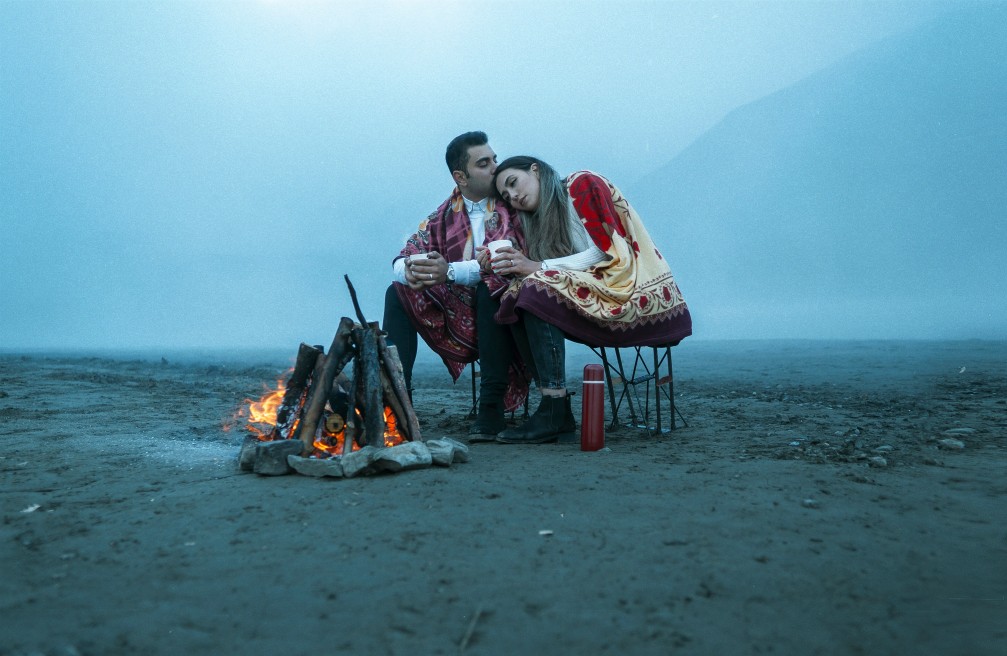
If sipping wine by the beach or posing by poolside cabanas feels a little too mainstream for you two, then here’s a spicy twist: How about a honeymoon where you’re riding through the clouds at 18,000 feet, camping under a billion stars, and bonding over bowls of steaming thukpa? Yep, Ladakh is the honeymoon destination for couples who crave adrenaline over all-inclusive resorts. Tucked away in the wild north of India, Ladakh’s dramatic landscapes, heart-racing adventures, and soul-soothing vibes make it a dream spot for duos who prefer altitude over attitude. Let’s break down exactly why this mountain wonderland is the ultimate getaway for thrill-seeking lovebirds. 1. Scenic Road Trips & Insane Mountain Passes Just picture this: You, your partner, and the open road. Driving (or riding a Royal Enfield if you’re feeling extra bold) through the world’s highest motorable passes like Khardung La or Chang La, with jaw-dropping views at every turn. It’s giving Bollywood meets boss energy. This kind of Leh Ladakh road trip isn’t just scenic—it’s a full-on relationship milestone. You’ll cover stretches that are part of popular Ladakh road trip itineraries, passing through the best places in Ladakh like Nubra Valley and Pangong Tso. Pro Tip: Want that reel-worthy honeymoon content? Hit the Leh–Nubra–Pangong circuit. The scenery literally doesn’t miss. 2. Trekking & Camping Adventures Forget five-star suites. about sharing a tent at 14,000 ft, snuggled in sleeping bags after a day’s hike through ancient Himalayan trails? Whether you’re up for the gentle Sham Valley trek or the wilder Markha Valley route, trekking in Ladakh is the ultimate couple bonding activity. There are countless Ladakh trekking routes ideal for both beginners and seasoned trekkers. From cultural stays to remote camping, this Ladakh adventure tour unlocks a side of travel most honeymooners never even imagine. Pro Tip: Choose treks with overnight stays in traditional Ladakhi homestays. You’ll get home-cooked meals, local stories, and a cultural connection that goes way deeper than any hotel buffet. 3. Sleep in Style Ladakhi Style Luxury resorts are nice… but have you ever fallen asleep in a warm tent beside a glacial lake under a billion stars? That’s the Ladakh honeymoon vibe. Think eco camps by Pangong Lake, chic cabins in Nubra Valley, or homestays with local Ladakhi families who welcome you like their own. You’re not just getting a place to crash; you’re getting home-cooked thukpa, morning views of the Himalayas, and stories that’ll stay with you long after the honeymoon tan fades. Pro Tip: Choose eco-friendly honeymoon stays in Ladakh that support local communities because love feels even better when it’s sustainable. 4. Ride or Die (Together) Couples who ride together, vibe forever. Picture this: you and your partner on a Royal Enfield, zooming through mountain passes, prayer flags fluttering, icy winds brushing your cheeks. This isn’t just a ride—it’s a full-blown Ladakh road trip adventure. And the best part? You can find Leh Ladakh tour packages that cater specifically to bikers. Whether you’re taking it slow around Tso Moriri or powering through to Zanskar, this kind of Ladakh trip is pure freedom on two wheels. Pro Tip: If bikes aren’t your thing, try a tandem cycling tour in Ladakh—quirky, challenging, and ridiculously fun. Bonus: the couple selfies? Chef’s kiss. 5. Cuddle Under a Billion Stars Who needs a candlelight dinner when you can lie under the clearest night skies in India with your favorite person? Ladakh is a literal stargazer’s dream, especially in Hanle or Tso Kar, where there’s nothing but you, the Milky Way, and complete silence. Bring a blanket, share some hot butter tea, and get ready to talk about everything and nothing till the sky turns pink. Pro Tip: Plan your Ladakh honeymoon around the new moon for stargazing so surreal, you might forget to blink. Best Time to Plan a Ladakh Honeymoon So, when should you pack your bags and head for the hills with your wife? The sweet spot is May to September, when Ladakh’s honeymoon season is in full bloom. Think: snow-kissed peaks, open passes, perfect biking weather, and those famous blue skies. Any earlier, and you’re dealing with closed roads. Any later, and you’re basically popsicles. So yeah, summer is when Ladakh shows off, and your couple goals get that mountain magic. Bonus tip: June and July are perfect for lakes like Pangong and Tso Moriri. You’ll thank us later. What to Pack for an Adventurous Honeymoon in Ladakh Packing for a Ladakh honeymoon isn’t your usual beach bag situation. Here’s what you actually need: Layered clothing—mornings are warm, nights are “where’s my parka?” Sturdy hiking shoes—fashion can wait; your feet can’t. Sunscreen and sunglasses—that high-altitude sun doesn’t play. Portable charger + camera—no one wants their stargazing selfie dreams ruined by 2% battery. A wild heart & sense of humor—things won’t always go as planned, and that’s where the memories are made. Pro Tip: Oxygen levels are lower here. Go slow the first couple of days; let your body (and relationship) adjust to the altitude! FAQs: Ladakh Honeymoon for Adventurous Couples 1. Is Ladakh a safe honeymoon destination? Yes, Ladakh is generally safe for couples, including first-time visitors. Just make sure you acclimatize to the altitude and follow local travel advisories. 2. What is the best time for a honeymoon in Ladakh? The ideal time is May to September, when the roads and passes are accessible and weather conditions are favorable for adventure activities. 3. Can we find romantic honeymoon packages in Ladakh? Absolutely! There are many Ladakh honeymoon packages designed for adventurous couples, including options like trekking, camping, and cultural tours. 4. Are there any luxury honeymoon resorts in Ladakh? While Ladakh isn’t about over-the-top luxury, there are several eco-luxury stays and boutique homestays that offer a romantic and authentic experience. 5. Is Ladakh good for adventure honeymoon activities? Yes! From trekking and biking to rafting and camping, Ladakh is ideal for couples who crave adventure and unique experiences on their honeymoon. Final Thoughts If your idea of romance includes



